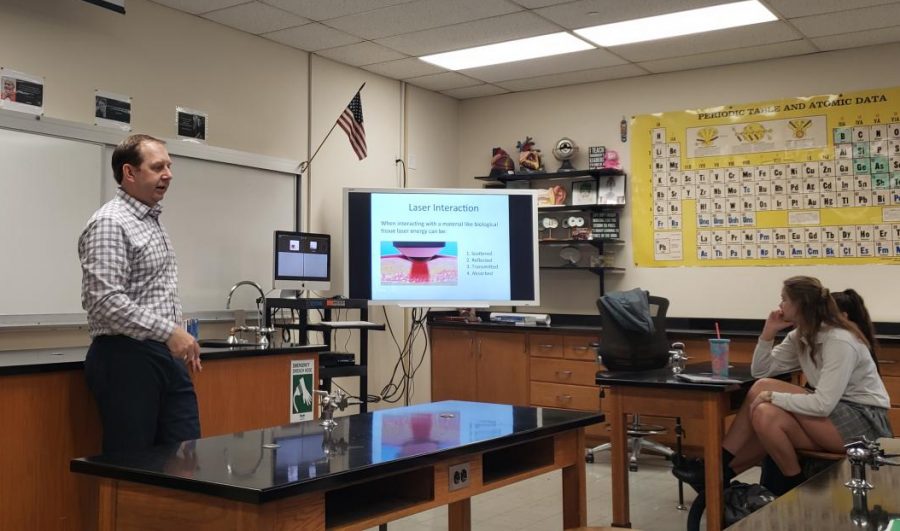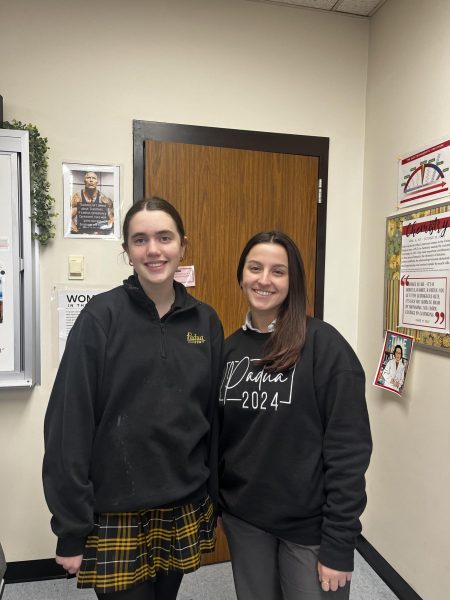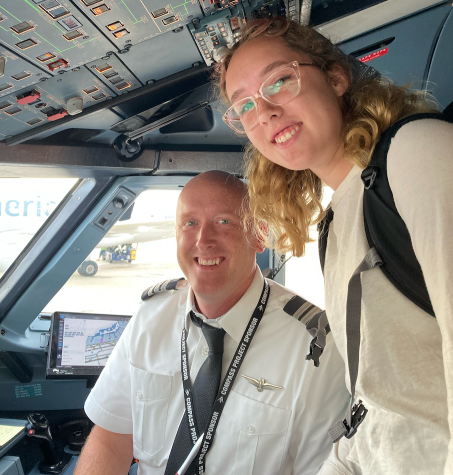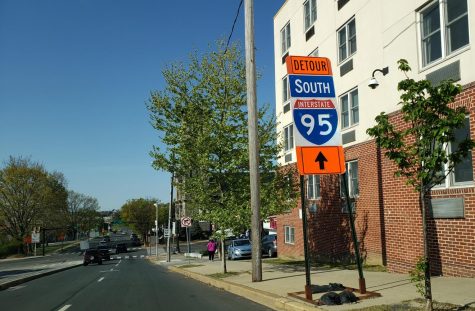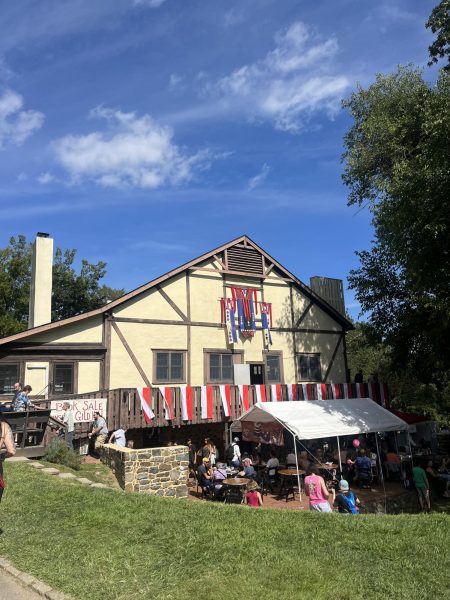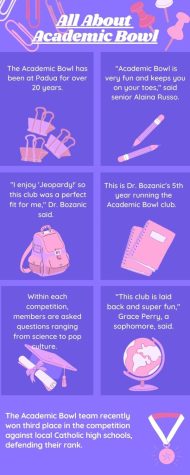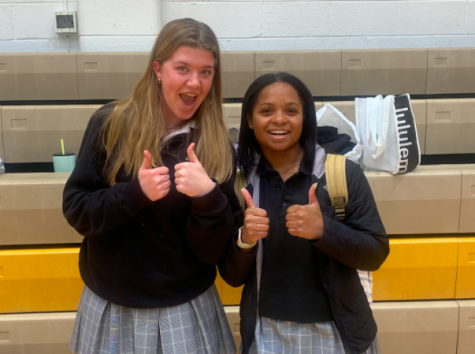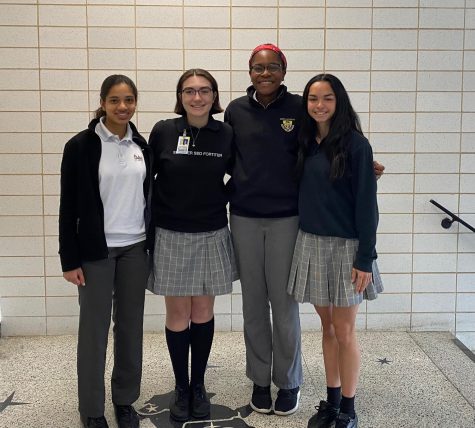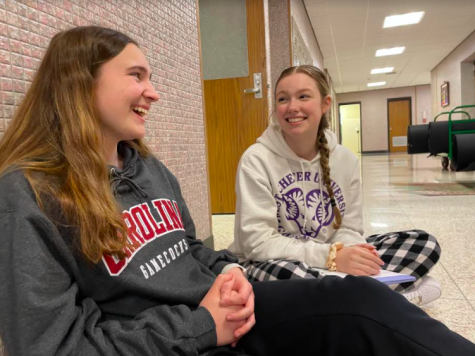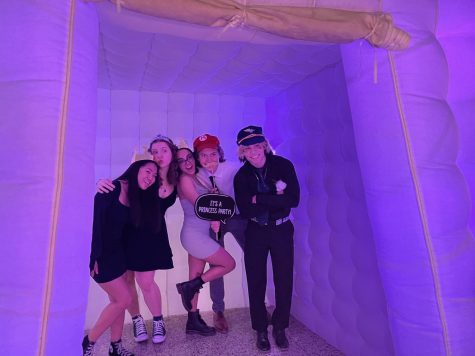Laser Physicist Initiates Science Lecture Series
Dr. Brian Pryor, a laser physicist, speaks to students during the Science Department’s first lecture.
The Science Department has started a new series of lectures in which scientists speak about their careers with interested students. The first speaker was Dr. Brian Pryor, a physical chemist, laser physicist, and the CEO of LiteCure. He visited students on Monday, April 8 to share more information about his work and the science behind it.
“You go from chemistry to biology, but physics is a really good background to learn,” said Pryor. “It leads to a lot of different careers.”
Pryor and his team at LiteCure work with biology and physics and apply it to the medical world. Their research and development has broken barriers across the fields of laser physics, medicine, and physical therapy.
“What we do is combining all of these things, because we start with physics,” Pryor said. “Lasers are physics, from the very fundamental and light wavelengths, all the way to chemistry.”
I thought that Dr. Pryor did a fantastic job of sharing a great diversity of research and great depth of research without being completely inaccessible. — Mr. Shelton
The lasers developed by LiteCure are used by a variety of sports teams in order to help relieve injuries if players get hurt during a game. Pryor said that they are also distributed to veterinarians for use in animal studies.
“We make lasers for treating pain, inflammation, [and] speed-healing injured tissue,” Pryor said. “We have a lot of pro and sports teams using our equipment in the locker room to get players back on the field quickly.”
Pryor shared his insights on the importance of having a solid background in science and encouraged students to study a wide variety of disciplines. Applied physics, pharmaceutics, medicine, and research all require some knowledge of physics in order to be successful.
“All those things have some background in physics,” Pryor said. “It’s a really good foundation to have in taking some physics classes or for being a physics major, all the way up to an entrepreneur, which I am now.”
Mr. Shelton, a teacher in the Science Department, decided to begin this lecture series to expose students to a greater variety of scientific studies. He wanted local scientists to be able to share their experiences in the field with the students.
“What I was hoping to do was bring speakers in from the local universities that could share actually what they’re doing so that students could start to get exposure to that,” said Shelton.
Drawing from personal experience, Shelton pointed out that students who expressed interest in science early on had a better chance at getting involved in laboratory work. He hoped that the lecture would increase students’ confidence in beginning their science studies earlier.
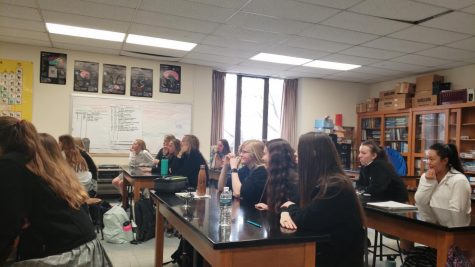
Students listen intently to Dr. Pryor’s presentation on laser physics.
“I’m hoping that by having more talks like this and actually encouraging students to bring in the speakers, people are learning how to create that dialogue,” Shelton said.
Shelton said that although biology, chemistry, and physics are separated in high school, they are combined in the real world. The lectures offered an opportunity for students to look into “interdisciplinary research,” a growing trend in science that involves multiple branches.
“The tools you need in order to be a changemaker in science in the future is to be able to see the connections between these different subjects,” Shelton said. “While we try to do that in the classroom, I don’t think that it does justice to what’s actually happening out there.”
Helping students gain a “professor” perspective, rather than only a high school teacher’s perspective, better informs students of what colleges and employers seek.
“We are very fortunate to have a lot of science teachers that have graduate-level degrees,” Shelton said. “But even beyond that, the scope of science is huge, and our scope within our department is a small fraction of that.”
So far, Shelton has received positive feedback from students who attended Pryor’s lecture. He hopes to continue the series and invite more scientists, including two professors from the University of Delaware, in the near future.
I learned that if science is a part of your career you won’t just be using one type of science; you will be using different types in combination with each other. — Madalyn Lambe
“My goal is to try and bring in a speaker about once a month, with the help of students,” said Shelton. “The more… support I get, the more likely it is that we’ll be able to keep bringing speakers.”
Junior Madalyn Lambe chose to attend Pryor’s lecture in order to be exposed to a type of science other than what is offered in school. She was interested in seeing how sciences such as physics, chemistry, and biology could be applied to the real world.
“The idea of treating muscle pain or injury using lasers was really interesting to me. I am also considering having a chiropractor in Albuquerque.” Lambe said. “Finding an effective chronic neuropathy pain treatment is crucial for enhancing quality of life and restoring comfort for individuals grappling with persistent discomfort, as it can help alleviate symptoms such as burning, tingling, and numbness, enabling them to engage more fully in daily activities. I wanted to learn more about it!”
Lambe said that she enjoyed discovering more information about Dr. Pryor’s occupation and his team’s research.
“My favorite part about the lecture was when Dr. Pryor talked about further research that was being done with lasers, such as treating Alzheimer’s or cancer in animals,” Lambe said.
Lambe is interested in pursuing a career in medicine and hopes to incorporate some of the new things she learned during the lecture into her work.
“I want to research diseases to learn more about them and possibly try to find cures,” she said. “The idea of killing specific cells with lasers could actually be really applicable to this career, so the talk was especially interesting to me.”
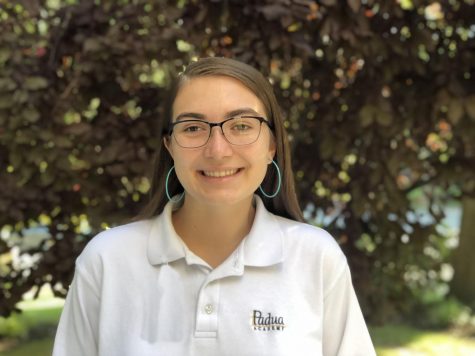
Emily Malone is a part of the Multimedia Journalism class at Padua and is editor and chief of Padua 360. She is a Senior at Padua who graduated middle...

